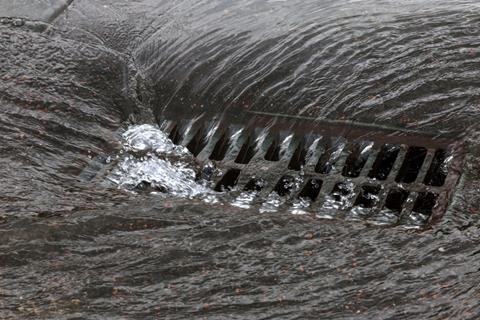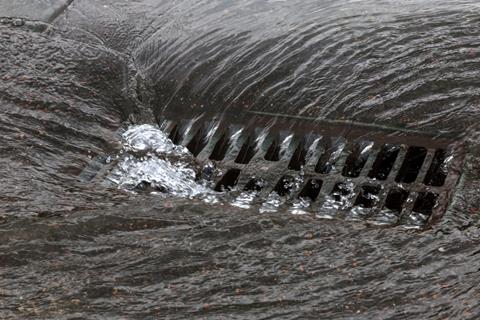
The government is to work up regulations and processes to make sustainable drainage systems mandatory for all new developments in England, following a review.
Sustainable drainage systems, often known as SuDS, will be required to reduce the impact of rainfall on new developments, using, for example, soakaways, grassed areas, permeable surfaces and wetlands.
The requirement is expected to be introduced in 2024 and comes after a government review into surface water management, released yesterday by the Department for Envrionment, Food and Rural Affairs.
It will be created through Schedule 3 to the Flood and Management Act 2010, which established a process to ensure new development includes a sustainable drainage system, but was never implemented.
Currently, the planning system already requires that developers include SuDS, but only in major developments – those of more than 10 homes – and developers are allowed to argue they don’t have to where there is “clear evidence that this would be inappropriate”.
Environment minister Rebecca Pow said: “Our traditional drainage systems are under increasing pressure from the effects of climate change, urbanisation and a growing population.
“The benefits of sustainable drainage systems are many – from mitigating flood risk by catching and storing surplus water and reducing storm overflow discharges, to enhancing local nature in the heart of our developments and helping with harvesting valuable rain water.”
But Rico Wojtulewicz, head of housing and planning policy at the National Federation of Builders, said he was concerned about the extra costs this would mean for housebuilders that were “hitting small builders the most”.
“I don’t think the government has thought enough about the extra costs,” Wojtulewicz said. “It’s coming at a really bad time”.
He said he understood the need for the SuDS but suggested the “key” to making it work was the government coming up with a streamlined process for the adoption and acceptance of the drainage design because “if you don’t get that fixed you’ll get delays [in development]”. Environment secretary Therese Coffey said the government will consult on how to implement the mandatory use of sustainable drainage later this year.
Wojtulewicz said the government needed to invest in the current sewerage system and questioned how this new requirement would sit with nutrient neutrality rules. Nutrient neutrality rules, which stop councils allowing developments that are likely to add more phosphates and nitrates to waterways, are currently holding up tens of thousands of homes.
The government said yesterday SuDS would “alleviate the presures on our traditional drainage and sewerage systems”.
Neil Jefferson, managing director at Home Builders Federation, warned: “Government needs to ensure that the range of other requirements, such as biodiversity, align such that total land take does not impact on site viability and so housing delivery.”
But, he added: “The industry is committed to implementing SuDS on sites and delivering high quality drainage systems. We welcome the recognition of the need to plan how infrastructure maintenance is funded post completion of the site.”
Philip Box, public affairs and policy adviser at UK Green Building Council, said: “As one of more than 40 experts who wrote to the prime minister to recommend this move, we welcome the government’s commitment to normalising drainage principles that protect both natural and built environments.
“Well-designed sustainable drainage is widely recognised as the best way to manage flooding risks and pollution overflows – both serious challenges to communities that will worsen as our climate changes.”
The review was carried out following another independent review, commissioned by the government in October 2019, looking at the arrangements for determining responsibility for surface water and drainage assets. The 2019 review set out the reasons for implementing schedule 3.



